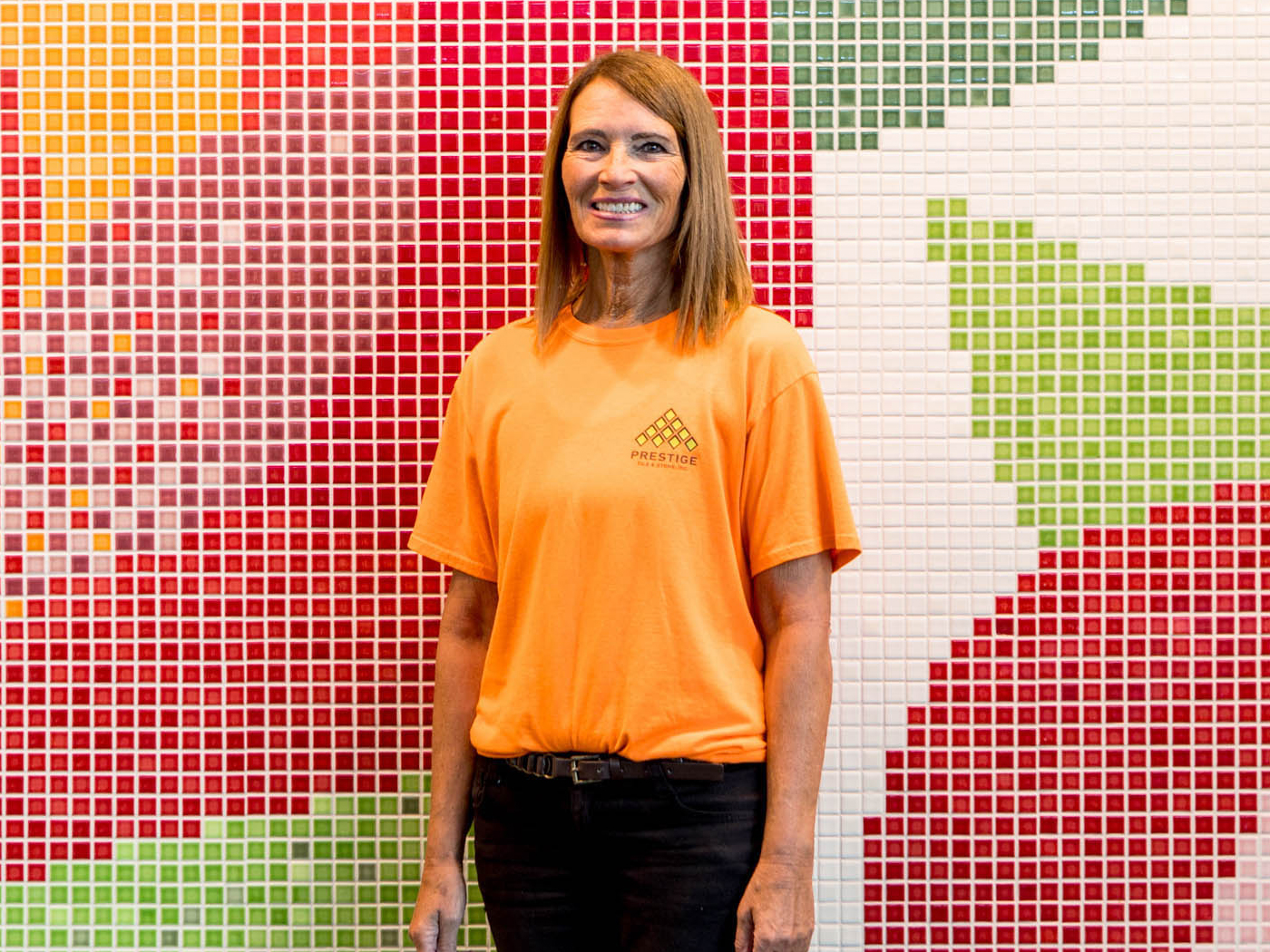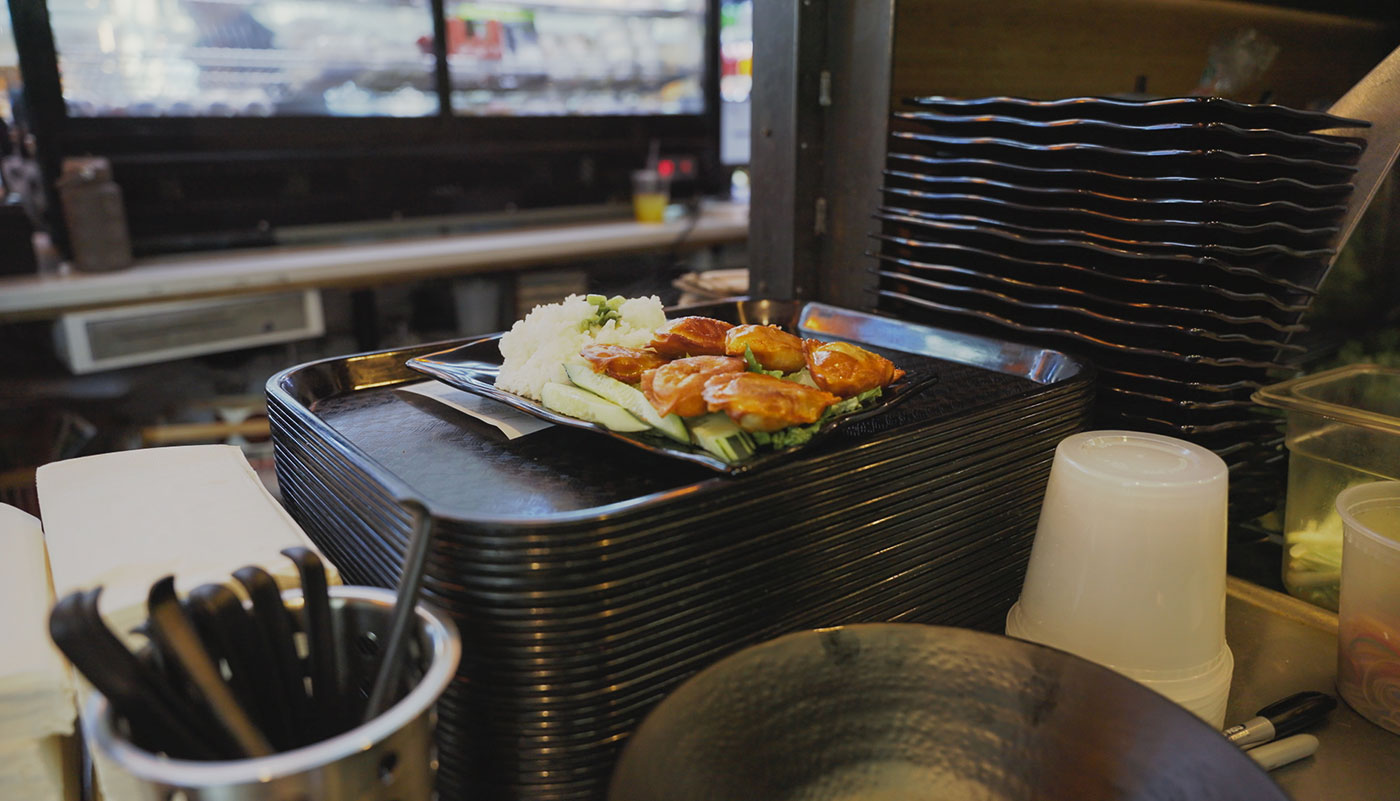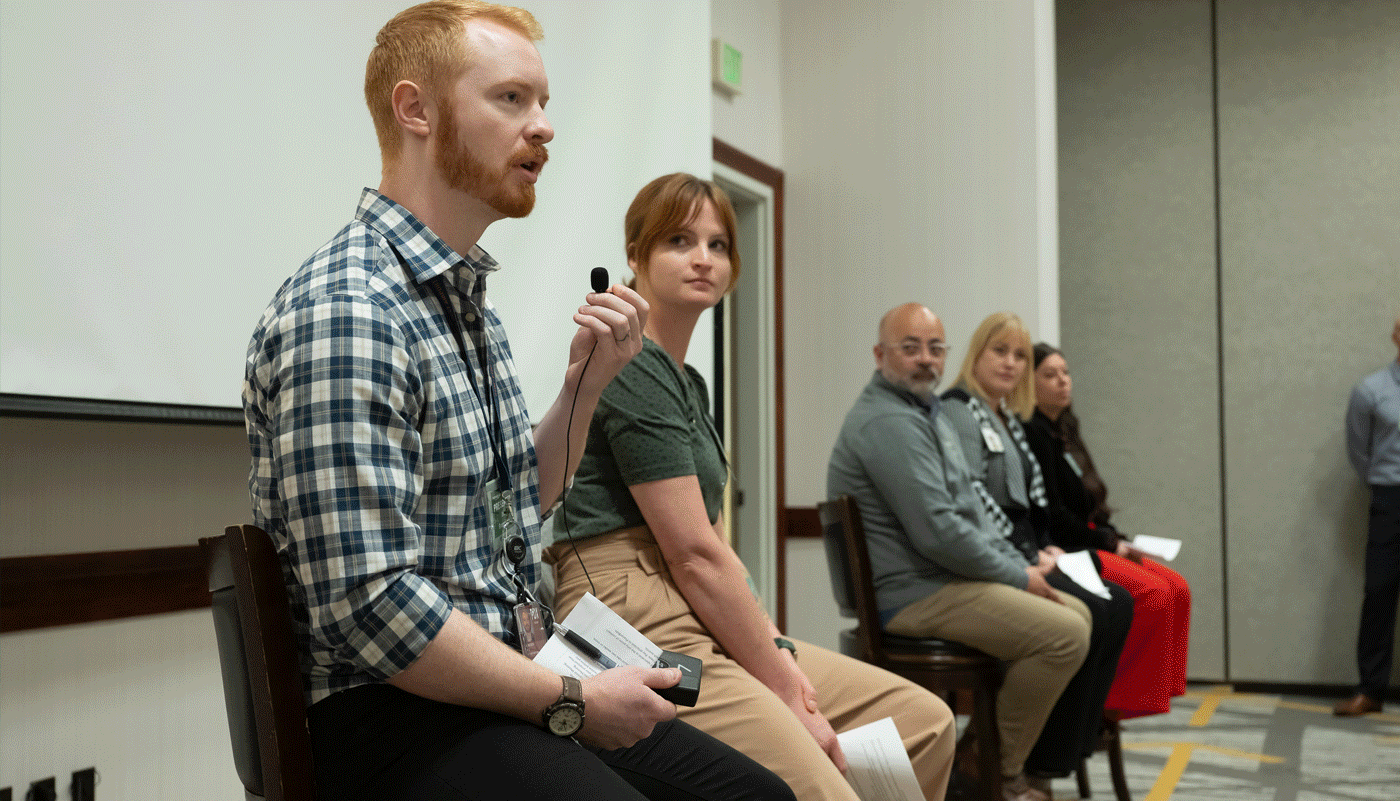The Port’s new brand: A mission to move with purpose
At first glance, the Port of Portland’s new logo may look familiar, even if you’re not sure why. Just hold it up to a map of the Portland Metro Area. You’ll notice that the swoops inside the circle capture a bird's-eye view of the point where the Willamette and Columbia Rivers meet.

The theme behind this new icon is “confluence,” or coming together. It represents the confluence of our two major rivers, but also the tens of thousands of people who come together every day to fulfill the Port’s shared vision.
Changing the Port’s logo this September isn’t just about updating our website, signs, or access badges. It’s the symbol of a much bigger change. Over the past three years, we’ve been building a new mission and new ways of partnering with communities across our region to create opportunity, access, and progress.
The power behind the Port? Our people, who help us move with purpose every day.
Shifting our focus from things to people
Curtis Robinhold, Port of Portland CEO, says that the pandemic shutdowns and racial justice movements of 2020 spurred the Port’s executive team to rethink its mission. "For 130 years, the Port has been about things," the team asked themselves. "We run marine terminals, airports, and industrial parks. But what are these things for?"
So we asked communities around the region, from East Multnomah County to our local chapter of the National Association of Minority Contractors, the same question. The answer came back, loud and clear: Helping people improve their lives.
 Exhibits by artists like painter Renee Zangara ensure that PDX reflects a diversity of voices, experiences, and stories
Exhibits by artists like painter Renee Zangara ensure that PDX reflects a diversity of voices, experiences, and stories Nancy Bebek, owner of Prestige Tile and Stone, is a Mentor Protege Program graduate and one of the many local partners bringing PDX's new design to life.
Nancy Bebek, owner of Prestige Tile and Stone, is a Mentor Protege Program graduate and one of the many local partners bringing PDX's new design to life.  We partner with the PDX Access Committee to find ways to make travel at the airport more accessible for everyone.
We partner with the PDX Access Committee to find ways to make travel at the airport more accessible for everyone.Creating new opportunities for all
One of our touchstones in this mission is shared prosperity: Giving people who have been shut out of the Port’s economic opportunities access to contracts, partnerships, and jobs. One of the hundreds of local businesspeople who’s been helping us build shared prosperity is James Faison, owner of Portland-based Faison Construction.
For years now, James has been a mentor with the Port’s Mentor-Protégé Program, which helps small businesses find work with the Port, particularly businesses owned by women and people of color.

"There's nothing in the country like it," he says. "They help with creating company swag, as well as with tax consulting and long-term planning. The Port will set you up for success." - James Faison, owner Faison Construction
PDX’s Access Committee, made up of leaders from disability-related organizations, is also making sure the airport welcomes and serves everyone.
"The Port is looking at the broad band of disabilities, asking our opinion on things that people don't necessarily think about," says Tobi Rates, executive director of the Autism Society of Oregon and a member of the Access Committee. Access doesn’t just mean ramps and signs, but sensory rooms and the sunflower lanyard program for people with invisible disabilities.
"In making the airport and the travel experience more accessible for people with disabilities, the airport becomes easier for everybody to navigate." - Tobi Rates, executive director of the Autism Society
Pursuing innovation
We’re also partnering with local businesses, nonprofits, and public agencies to transform Marine Terminal 2 into a site for innovation. There, we’re working together to build an industry that will create thousands of new jobs in mass timber and housing construction. One of the anchor tenants: Hacienda CDC, whose new Mass Casitas program designs and builds affordable, modular housing using mass timber made from Oregon wood. Mass Casitas is currently installing six prototype houses on sites around the state.
"Hacienda and the Port of Portland have been working as great partners. The fact that the Port is very well recognized in the state helps us with credibility as we're bringing to the table new alternatives and new products. Having the opportunity to tap into the Port's logistical and operations expertise has added real value." - Leticia Cervantes, innovation director with Hacienda CDC
Our new Port story is growing our role as a confluence, bringing people together to improve the lives of everyone in our region. For 130 years, the Port of Portland has been a channel for transporting goods all over the world. More and more, we are a channel for economic growth.
When we move with purpose, we can make big things happen.








